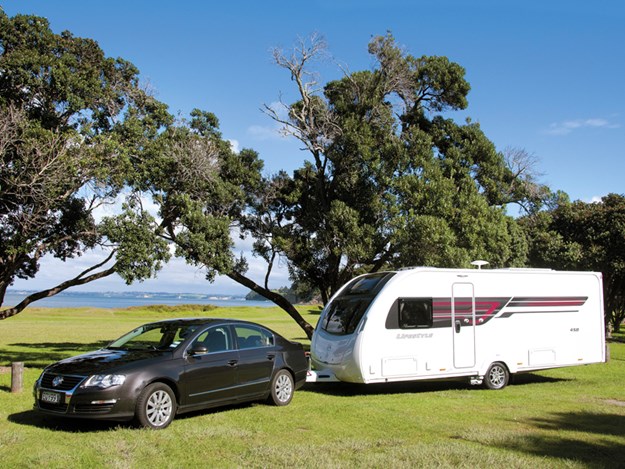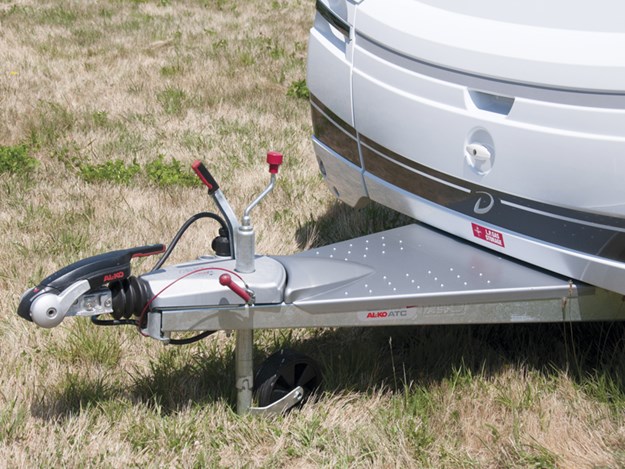Do you plan to use your current vehicle to tow a yet-to-be purchased caravan? If so, you must know the maximum weight it can tow. For this information look in the vehicle user manual, otherwise, contact the dealer.

Once you know your vehicle’s maximum tow weight, you can choose a caravan with a Gross Vehicle Weight (GVW) up to that weight. Conversely, if you have selected a caravan, you now know the weight your tow vehicle has to pull and can select the tow vehicle accordingly. Downward weight on the tow-ball is an essential ingredient for trailer stability. Manufacturers put limits on the maximum tow-ball weight their vehicles can tolerate.
As a guide, the maximum for cars is about 100kg and for SUVs about 150kg. Check the user guide or with the vehicle agent for the correct tow-ball weight figure for your vehicle. Note that if you are buying an enormous rig with a Gross Combined Weight (GCW = GVW of each vehicle added together) of more than 6000kg, you will need a Class 2 licence to drive it.
Are there different types of towbars?
Making and fitting towbars to cars and SUVs is specialist work. Towbars attach to the vehicle floor pan, and each model of each make has a different floor pan. If your vehicle is a popular make and model, there may be towbars in stock ready for fitting; otherwise, one will have to be made to fit. You may have to ring around manufacturers to get the best deal.
It takes about two hours to install this type of towbar. The business end of a car towbar is usually a flat steel bar, referred to as the tongue. Sometimes this tongue is removable. The tongue has a hole drilled through it where the tow-ball is attached. On large SUVs and utes, the tongue can be a square hollow tube that is adjustable for both length and height off the ground. These, too, maybe removed when not in use.
Hitches
Placing the ‘hitch’ on the drawbar of the towed vehicle over the tow-ball of the towing vehicle connects the two. In New Zealand, the most common hitch in use is the simple drop-over-the-tow-ball-and-lower-the-lever-to-lock-type. Imported caravans have introduced us to more sophisticated anti-sway hitches.
Some have drop handles with two locking positions. Others have a drop handle and a locking lever. Both incorporate friction pads that grip the tow-ball and lock the connection ‘in-line’, keeping it rigid and reducing the prospect of the caravan swaying.
The tow-ball must be kept grease-free to make this effective. The Alko anti-sway hitch requires a long-necked tow-ball to keep the sides of the hitch clear of the tongue so it can rotate freely. Backing a caravan into position compresses the braking ram in the tow hitch.
Before unhitching, pull the caravan forward a little - 200mm to 300mm - to release this compression in a controlled way. Otherwise, when the hitch is lifted off the tow-ball, the ram may rush out and damage the tow vehicle.
Tow-balls
In New Zealand, there are two tow-ball sizes: 50mm and 1+7/8” (47mm). Why are two sizes permitted? I have no idea. Caravans imported from Britain and Europe have 50mm tow-balls. Loan trailers from Bunnings and other retailers have 47mm. When fitting a new towbar, be sure to get both sizes of tow-ball.
That way you can swap the tow-ball to suit the hitch on the item being towed. Be warned; it is hazardous to tow with a 50mm hitch over a 47mm tow-ball. The larger hitch can jump off the smaller tow-ball with lethal consequences for other road users.
Electrics
A towed vehicle, if it is to get a WOF, must display the same warning lights that are displayed at the back of the towing vehicle - stop, turn, and park lights. A flat, seven connector plug suffices for this. Additional lights - reversing lights, for example - can be accommodated by using a flat 12-pin plug.
For charging the house battery and running the fridge while underway, heavy-duty circuits using Anderson plugs are recommended. Some tow-balls are fitted to carry bike racks only. If this is your situation, you could use a towbar without wiring fitted.






